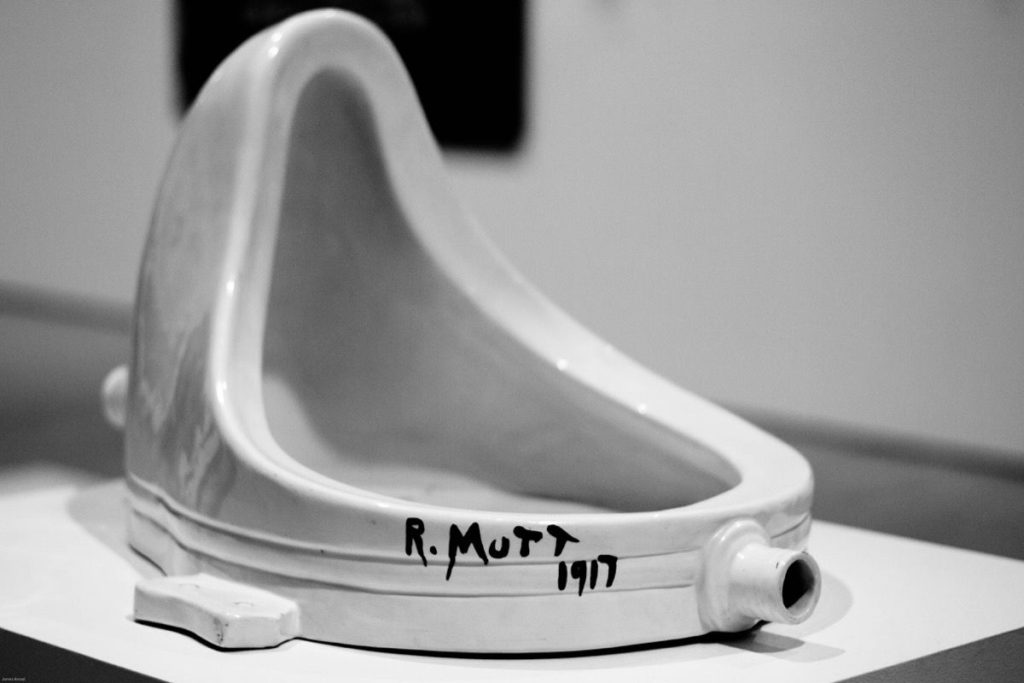
“Fountain” is a readymade sculpture by Marcel Duchamp in 1917. Readymades, as he called them, disrupted centuries of thinking about the artist as a creator. Duchamp argued that “an ordinary object could be elevated to the dignity of a work of art by the mere choice of an artist.”
This is one of Duchamp’s most famous works and is an icon of the 20th century. The original, which is lost, consisted of a standard urinal, usually presented on its back for exhibition purposes rather than upright, was signed and dated ‘R. Mutt 1917’. One of the copies of “Fountain” is now in the Tate in London and is a replica made in 1964. It is also made from glazed earthenware painted to resemble the original porcelain.
Duchamp meant for the urinal to be presented on its back for the purposes of showing it and presenting it as a new take on the aesthetic of the machine or a classic gesture of using an iconic object.
It was rejected from the show it was to be entered in. It was hidden behind a curtain and forgotten for a while. A book was entered with it called “The Blind Man.” Its purpose was to explain the reason it was rejected from the exhibition. Reasons for this range from the urinal being immoral to how it was plagiarizing an object. The book included a photo of the urinal taken by famous photographer, Alfred Steiglitz. Steiglitz was in possession of the urinal and disposed of it, meaning that what you see in a museum now is one of 17 replicas commissioned by Duchamp himself in the 1960’s. “Fountain” is arguably the first piece of conceptual art.
NOTE: Duchamp’s $6 submission fee was returned to ‘Mr. Mutt’ with a letter stating that it had no place in an art exhibition. Duchamp immediately resigned from the Society of Independent Artists stating that “The only works of art America has given (the world) are her ‘plumbing and her bridges.’”

